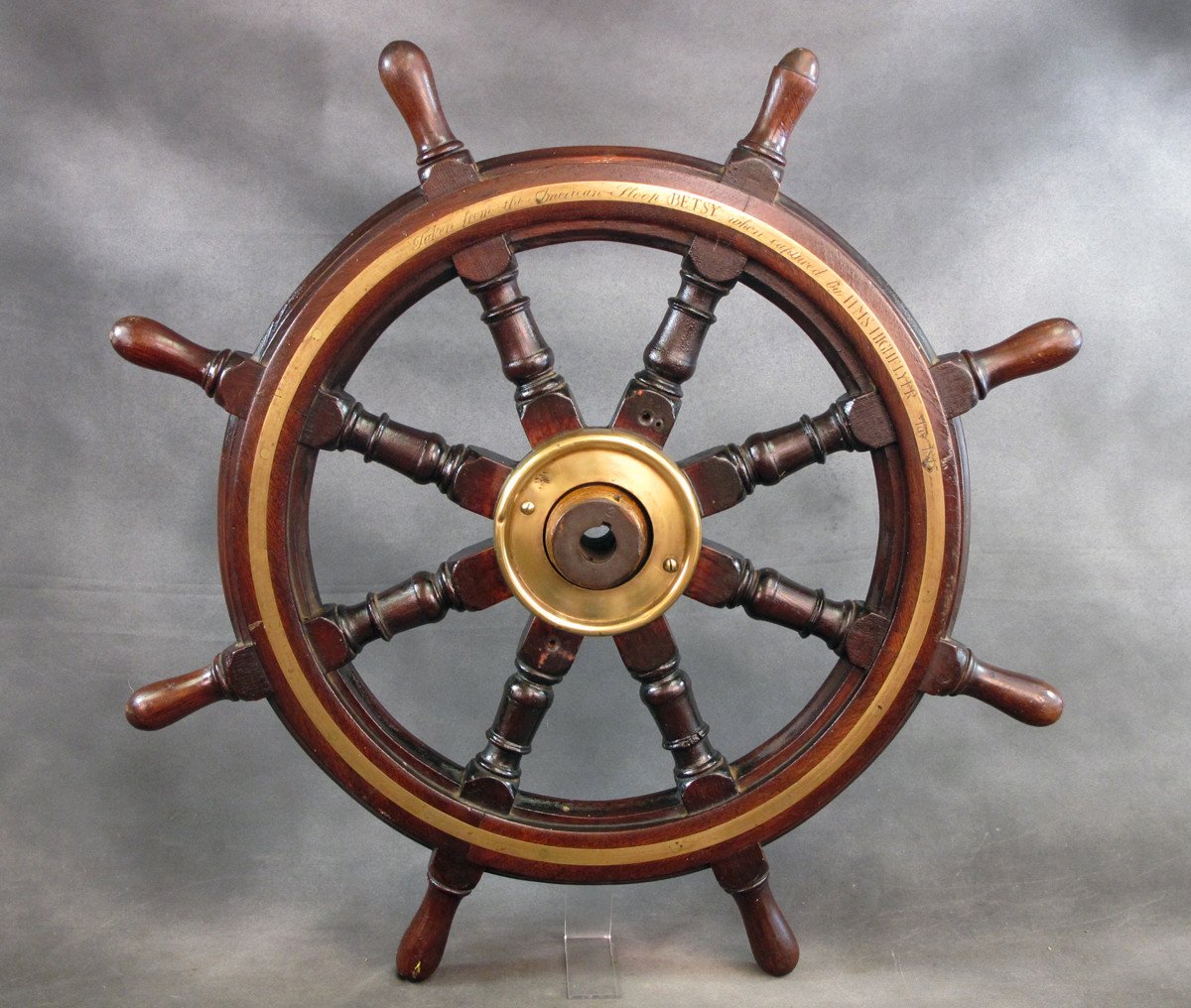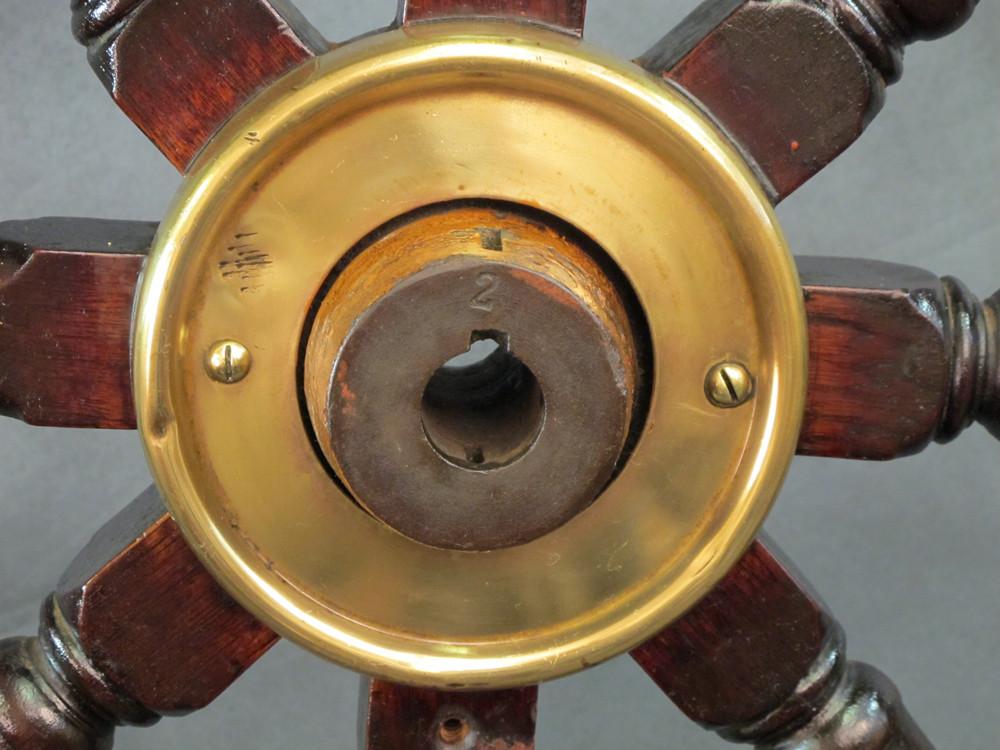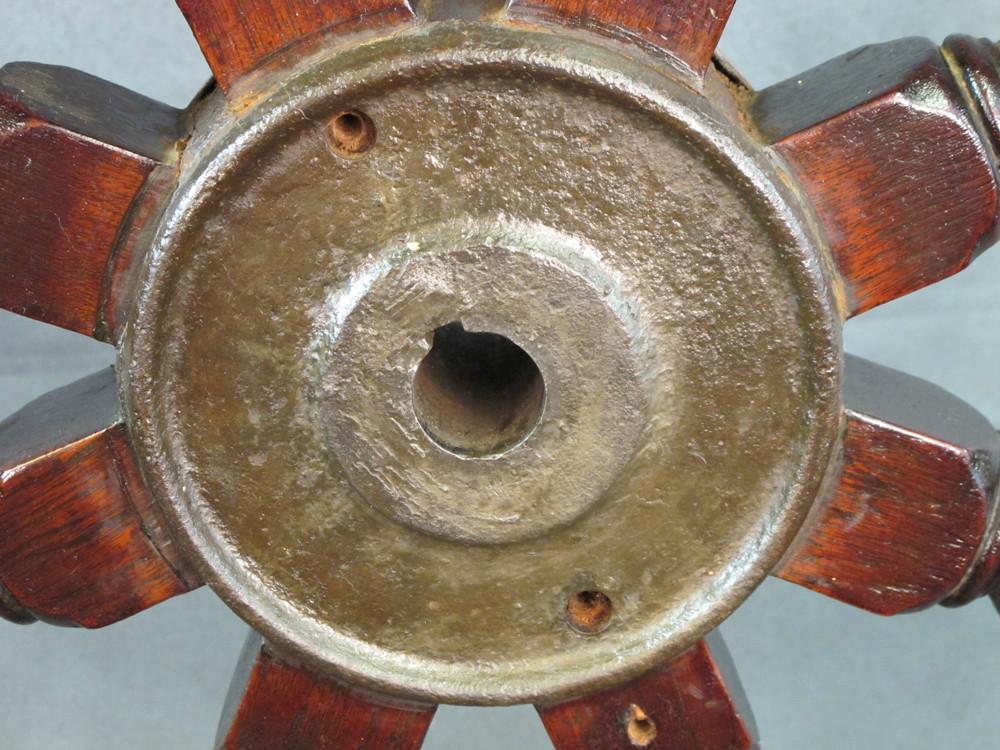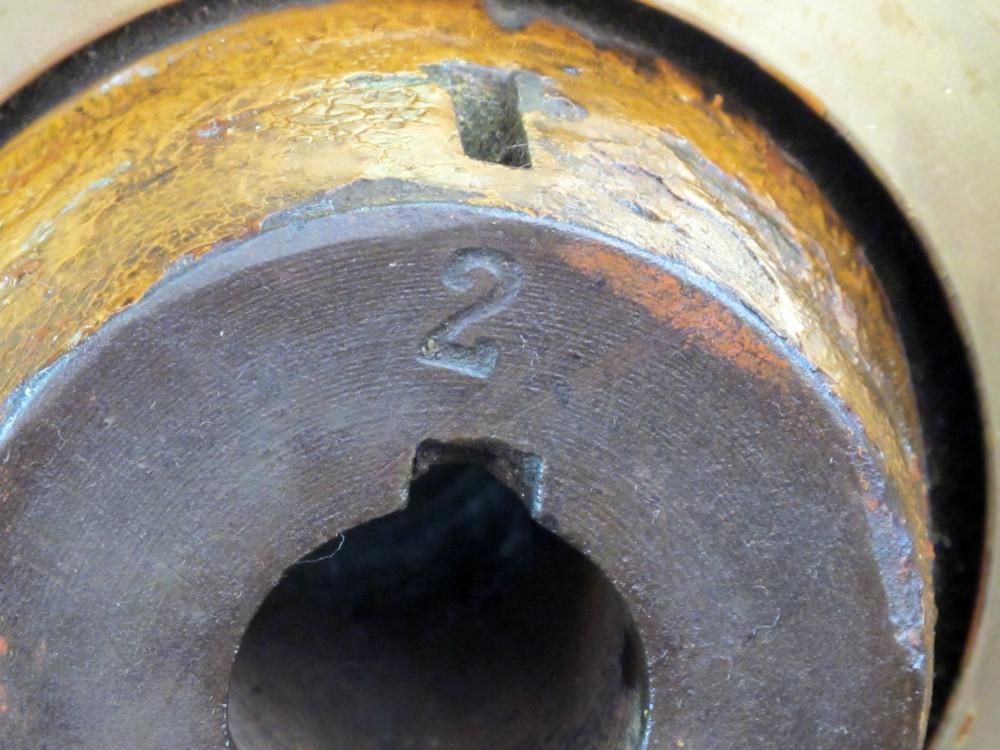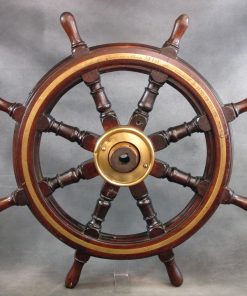Original 1813 Ships Wheel from the US Sloop Betsey Original Items
$ 3.495,00 $ 873,75
Original item: Well, this wheel has come a long way by a circuitous path. The U.S. Sloop Betsey had an assignment that would have given palpitations to most captains: it was ordered to be a lookout boat, the function of which was to keep an eye on British men-of-war on the Baltimore blockade and warn returning United States vessels to keep away. To perform this task, she had to keep track of the location of British warships, pass through them without being seen, sunk, or captured, and find incoming United States ships that might be heading for the protection of Baltimore to warn them of the blockade.
On the night of 24 May, 1813, the American privateer Roger, captain R Quarles, of fourteen guns and one and twenty men, slipped past the blockading squadron at Hampton Roads. Several days before this the Highflyer, under her new [Union Jack] flag, had captured the lookout boat Betsey under Captain Smith. This boat had been very useful to the Americans in eluding the British blockading ships and getting to sea, in order to give warning and information to our returning privateers. The Highflyers people promptly burned the Betsey, and took her men aboard their schooner.
It seems that the crew of HMS Highflyer were not above saving trophies, because the wheel of the Betsey has survived. It not only survived, but the victors commemorated the battle by engraving the captured wheel with a Trophy Message, Taken from the American Sloop BETSEY when captured by HMS HIGHFLYER May 1813.
BUT, who or what was the Highflyer? It was, in fact, a very successful AMERICAN, yes, AMERICAN, privateer. It was one of the first privateers to get out of Baltimore Harbor with the goal of preying on British commercial shipping after the declaration of war between the U.S. and Great Britain in 1812.
Another British packet ship taken by Americans in the autumn of 1812 was the brig Burchall, having on board an English commissary and his wife. This vessel was taken by the 5-gun schooner Highflyer, Captain J. Grant, of Baltimore. The Highflyer was one of the first private armed craft to get to sea from Baltimore in this war.
Highflyer had been a big thorn in the side of British commercial shipping for the better part of a year, having captured a total of eight British ships, some of which carried high-ranking British officials. But at last it was outgunned in February 1813, by the 74-gun ship of the line HMS Poictiers. Seventy-four BIG guns to five small guns means the Highflyer had little chance, and it was captured and turned into a tender with a lieutenant and a crew of 72 men.
But the story of the night of 24 May continues with a rousing sea chase and battle: At nine oclock in the evening the Roger got to sea, and soon fell in with the Highflyer. The British hailed the privateer, and on receiving no answer hailed again and threatened to fire. To this the Americans responded with a broadside, and immediately the two vessels became engaged in a close and heavy cannonade, which lasted until 11.30 P.M., when the Highflyer sheered off. The action had been at such close quarters that words of command in each ship could be distinctly heard by the opponents. In the heat of the battle two of the men taken from the Betsey managed to get into a boat and made their escape to land. On the following day the British gave Captain Smith and the remaining crew of the Betsey a boat, in which they reached Norfolk. Afterward it was learned that the enemy had suffered severely in this fight, and had the Roger been able to keep alongside the Highflyer the latter undoubtedly would soon have been compelled to surrender. As it was, the British lieutenant, the cook, and four men were killed while a midshipman and nine seamen were wounded.
The Highflyer was repaired and returned to duty with the British squadron, but on 23 September, 1813, was recaptured by the 44-gun United States frigate President. In all, Highflyer had served a bit over seven months as one of His Majestys Ships.
Fast Shipping with Professional Packaging
Thanks to our longstanding association with UPS FedEx DHL, and other major international carriers, we are able to provide a range of shipping options. Our warehouse staff is expertly trained and will wrap your products according to our exact and precise specifications. Prior to shipping, your goods will be thoroughly examined and securely secured. We ship to thousands clients each day across multiple countries. This shows how we're dedicated to be the largest retailer on the internet. Warehouses and distribution centres can be located throughout Europe as well as the USA.
Note: Orders with more than one item will be assigned a processing date depending on the item.
Before shipping before shipping, we'll conduct a thorough inspection of the items you have ordered. Today, the majority of orders will be delivered within 48 hours. The delivery time will be between 3-7 days.
Returns
The stock is dynamic and we cannot completely manage it because multiple stakeholders are involved, including our factory and warehouse. So the actual stock may alter at any time. It's possible that you may not receive your order once the order has been made.
Our policy is valid for a period of 30 days. If you don't receive the product within 30 days, we are not able to issue a refund or an exchange.
You can only return an item if it is unused and in the same state as the day you received it. You must have the item in its original packaging.
Related products
Uncategorized
Uncategorized
Uncategorized
Uncategorized
Australian WWII Owen MK1 Machine Carbine SMG Custom Fabricated Replica with Sling Original Items
Uncategorized
Uncategorized
Uncategorized
Uncategorized
Uncategorized
Uncategorized
Uncategorized
Armored Burgonet Helmet & Polearm from Scottish Castle Leith Hall Circa 1700 Original Items
Uncategorized
Armoured Fighting Vehicles of the World: AFVs of World War One (Hardcover Book) New Made Items
Uncategorized
Uncategorized
Uncategorized
Uncategorized
Uncategorized
Uncategorized
